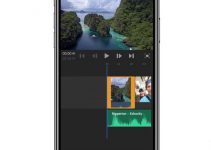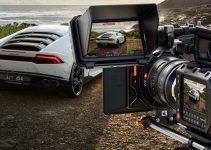For years if you wanted to find the best on-camera microphone the answer was always the Rode VideoMic—whichever variation happened to exist and fit your budget at the time. This category of on-camera mics has blown up over the years, with not only multiple competitive options available, but a whole category of microphones in the sub-$100 range.
Filmmakers Armando Ferreira and Connor McCaskill just did a serious test to find the best vlogging microphone. There are a ton out there, so they made rules that they had to be under $100 and accept direct power, meaning no battery required. This led them to settle on the just-released Sennheiser MKE 200, the standard Rode VideoMicro, the affordable Movo VXR10 PRO, and the dual-capsule Deity D4 DUO. That’s a good range of items and brands.
Each mic has its own distinct look and feel. Sennheiser brought some of their classy style to the MKE 200. It also opts for a design without a shock mount and the 3.5mm jack is located on the front. It’s interesting.
Also it comes with a wind cover and soft case along with TRS and TRRS cables with locking mechanisms.
The Rode VideoMicro is perhaps the most popular vlogging mic on the market. Rode made a huge name for themselves with effective and affordable on-camera mics and the VideoMicro is an ultra-compact option. It comes with a dead cat wind sock, has a Rycote shock mount, and a TRS cable. A TRRS cable is available separately.
Shockingly, the most affordable option comes with the most goodies. That would be the Movo VXR10 PRO. Unpacking the hard case, the mic bundle has two wind covers, one standard and one dead cat, a shock mount, and both TRS and TRRS cables.
The mic also stands out from the rest because it has its own 3.5mm headphone jack for monitoring.
Deity has been picking up steam in recent years with their microphones. The D4 Duo is a unique option as it uses two capsules to control whether to pick up just audio from from in front of the camera or both in front and behind. You can control this with the flick of a switch and could be very helpful for vlogging as you can pick up multiple people with ease.
It’ll actually split the channels in the recording so you can separate the different capsules for editing. And, you can also an input to record both the front capsule and any other mic you want to connect simultaneously. It comes with two dead cat wind covers, a shock mount, and a TRS cable.
Testing methodology is a blind test. That means each mic will be getting assigned a specific letter and then the mics will be used in various testing areas for you to analyze and pick which you prefer. The first tests are directly into an R5.
The second set of tests uses a MixPre-6, a top-notch audio recorder. This is the best possible quality you can squeeze out of all these microphones. And since Ferreira recorded an intro with the MKH 416 you can even compare them all to a “real” microphone.
This entire section is hard to explain since it is essentially just listening to different mics, so I highly recommend you watch the video, listen closely, and make your own judgments.
If you just want the summary, McCaskill jumps in with his own conclusion and thinks that the Movo VXR10 is the best sounding. This is surprising consider it is the cheapest at around $50.
The reason that he and Ferreira appreciate it is that is gives a fullness to the sound due to a bit extra bass response. However, small complaints on the Movo are a cheap cable and the need to use TRRS cables. The other surprise was that they did not like the Rode VideoMicro at all, claiming that it sounds cheap.
Ferreira wanted to see how the Deity mic performed and was a fan based on the cool features it has built-in. The only thought was that the Deity’s cardiod pattens provided similar performance to the other mics with supercardiod pickups since that does have some rear reception.
However, if you can make use of the input that is a whole other feature you might want to consider. He calls it the “X-factor.”
Finally, Sennheiser was in an interesting spot since it is the priciest at $100. It seemed fairly average on audio quality, but the design is nice looking.
The output in the front is a weird design choice, but it being locking is appreciated. It also did sound very clear in the tests. However, considering you can get the other mics for a lot cheaper it doesn’t quite seem like an easy choice to recommend.
You can’t go too wrong here with any of these choices. Though McCaskill and Ferreira recommend the Movo as it is affordable and provides plenty of quality.
Did you pick the Movo out of your blind tests? Or did you prefer a different mic in the end?
[source: Armando Ferreira]
Order Links:
- Movo VXR10 PRO Video Microphone (B&H, Amazon)
- Deity D4 DUO Dual-Capsule Video Microphone (B&H, Amazon)
- Sennheiser MKE 200 Compact Video Microphone (B&H, Amazon)
- Rode VideoMicro Ultra-Compact Microphone (B&H, Amazon)
- Sennheiser MKH 416 Shotgun Microphone (B&H, Amazon)
- Sound Devices MixPre 6-II Field Recorder (B&H, Amazon)
Disclaimer: As an Amazon Associate partner and participant in B&H and Adorama Affiliate programmes, we earn a small comission from each purchase made through the affiliate links listed above at no additional cost to you.




